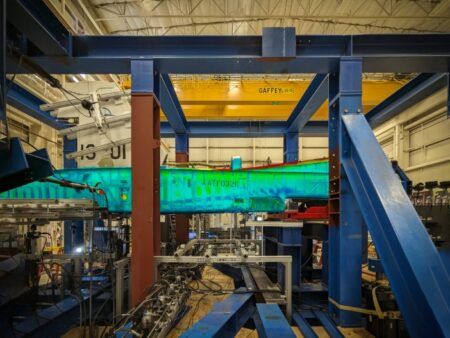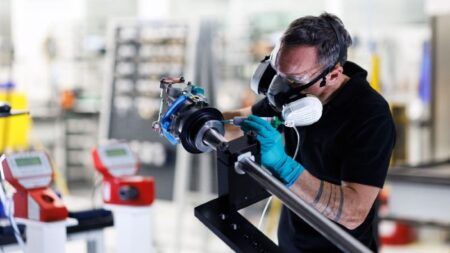NASA has issued contracts to two industry consortiums led by Boeing and Northrop Grumman to develop technology and designs for a commercial passenger aircraft capable of traveling at speeds of up to Mach 4.
The two 12 month contracts are part of the US research agency’s Advanced Air Vehicles Program (AAVP) and aim to explore the possibilities, outline risks and challenges and identify the technologies needed to fly at speeds between Mach 2 and Mach 4 (1,535-3,045mph)
Boeing is leading one team with partners Exosonic, GE Aerospace, Georgia Tech Aerospace Systems Design Laboratory, Rolls-Royce North American Technologies, and others. Northrop Grumman Aeronautics Systems is leading the other team, with partners Blue Ridge Research and Consulting, Boom Supersonic, and Rolls-Royce North American Technologies.
The contracts follow a recent NASA study that examined the business case for passenger air travel faster than Mach 2. The study concluded that potential markets exist in about 50 established routes that connect cities. Supersonic flights are currently prohibited over land, so the routes are transoceanic – over the Atlantic and Pacific.
Lori Ozoroski, project manager for NASA’s Commercial Supersonic Technology Project said, “We conducted similar concept studies over a decade ago at Mach 1.6-1.8, and those resulting roadmaps helped guide NASA research efforts since, including those leading to the X-59.
“These new studies will both refresh those looks at technology roadmaps and identify additional research needs for a broader high-speed range.”
A speed of Mach 4 would be up to three times faster than the X-59 experimental supersonic aircraft NASA plans to fly later this year which is testing technologies that mitigate the sound of sonic booms and could lead to supersonic passenger flights being allowed overland.
The US Air Force is also working with UK-based company Reaction Engines to adapt technology from its SABRE air breathing engines onto its fighter jets that could potentially boost their speeds to Mach 4.
Roadmap and technology devleopment
Each AAVP team will develop roadmap elements to include airframe, power, propulsion, thermal management, and composite materials that can hold up under high-supersonic speeds. They will also create non-proprietary designs for concept vehicles.
Mary Jo Long-Davis, manager of NASA’s Hypersonic Technology Project said, “The design concepts and technology roadmaps are really important to have in our hands when the companies are finished.
“We are also collectively conscious of the need to account for safety, efficiency, economic, and societal considerations. It’s important to innovate responsibly so we return benefits to travelers and do no harm to the environment.”
Long-Davis and Ozoroski have been tasked by NASA’s Aeronautics Research Mission Directorate and the AAVP to develop a high-speed strategy. These conceptual vehicle designs and technology roadmaps are key to developing that strategy.
Once the industry engagement phase is completed, NASA and its industry and academic partners will decide whether to continue the research with their own investments.





